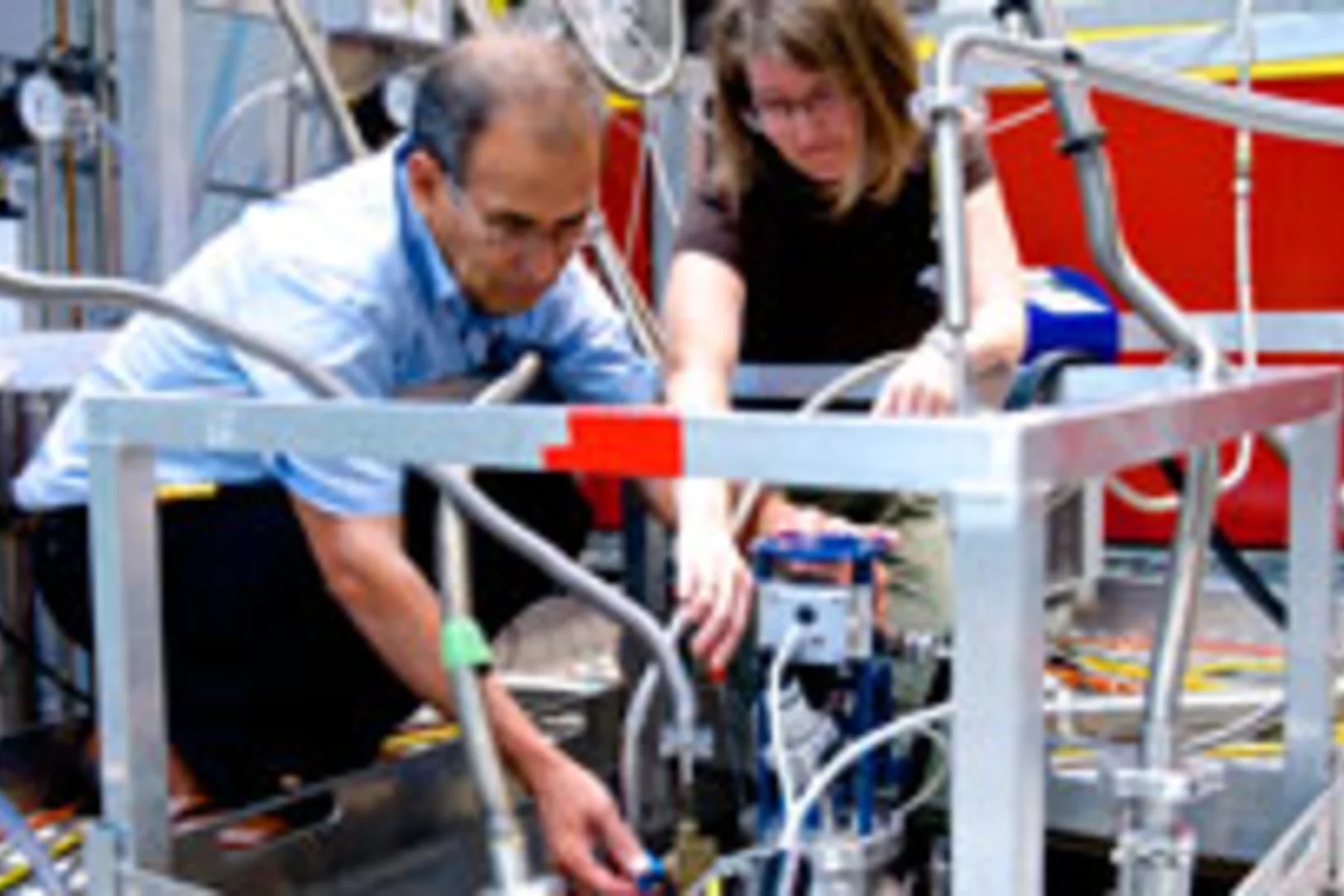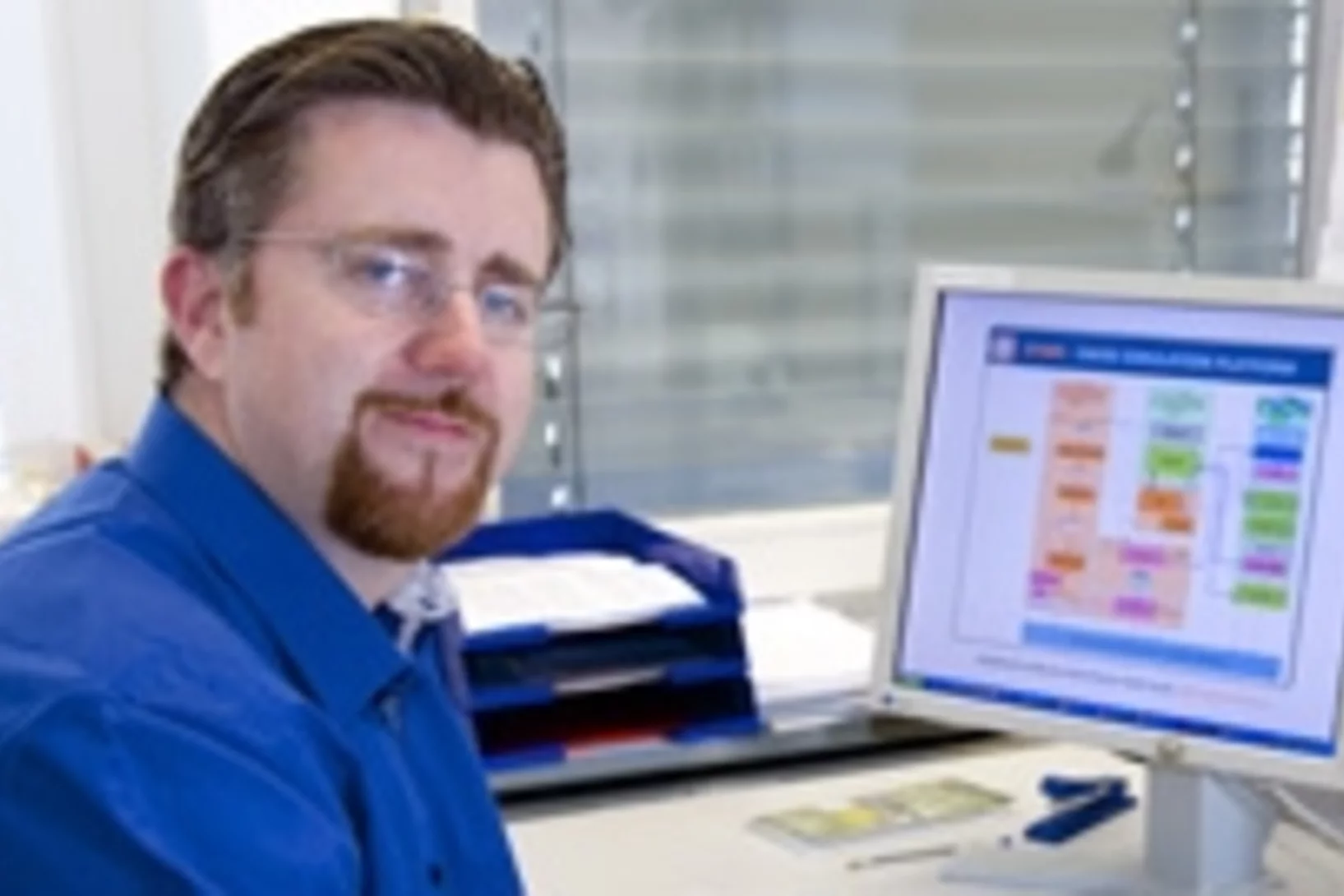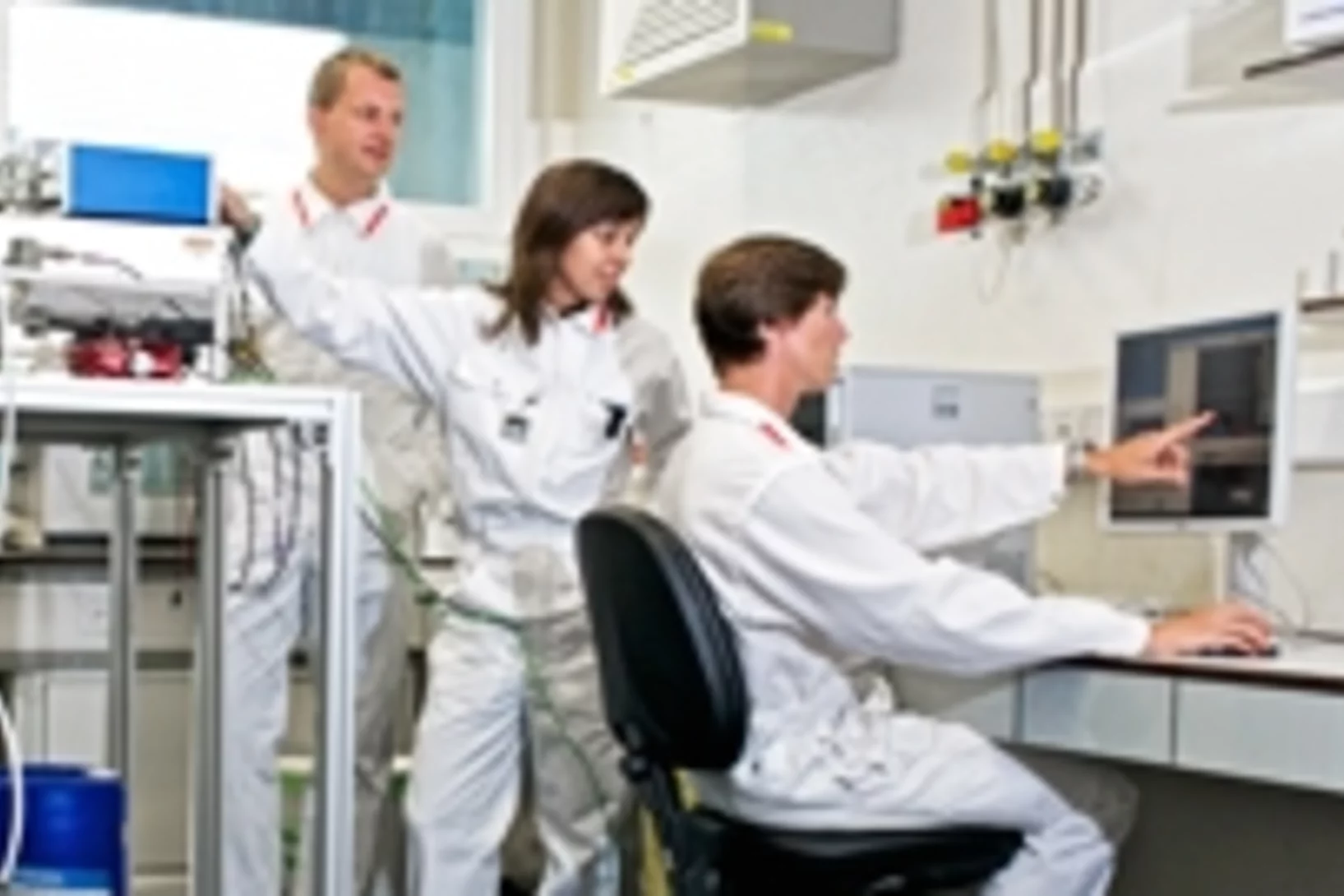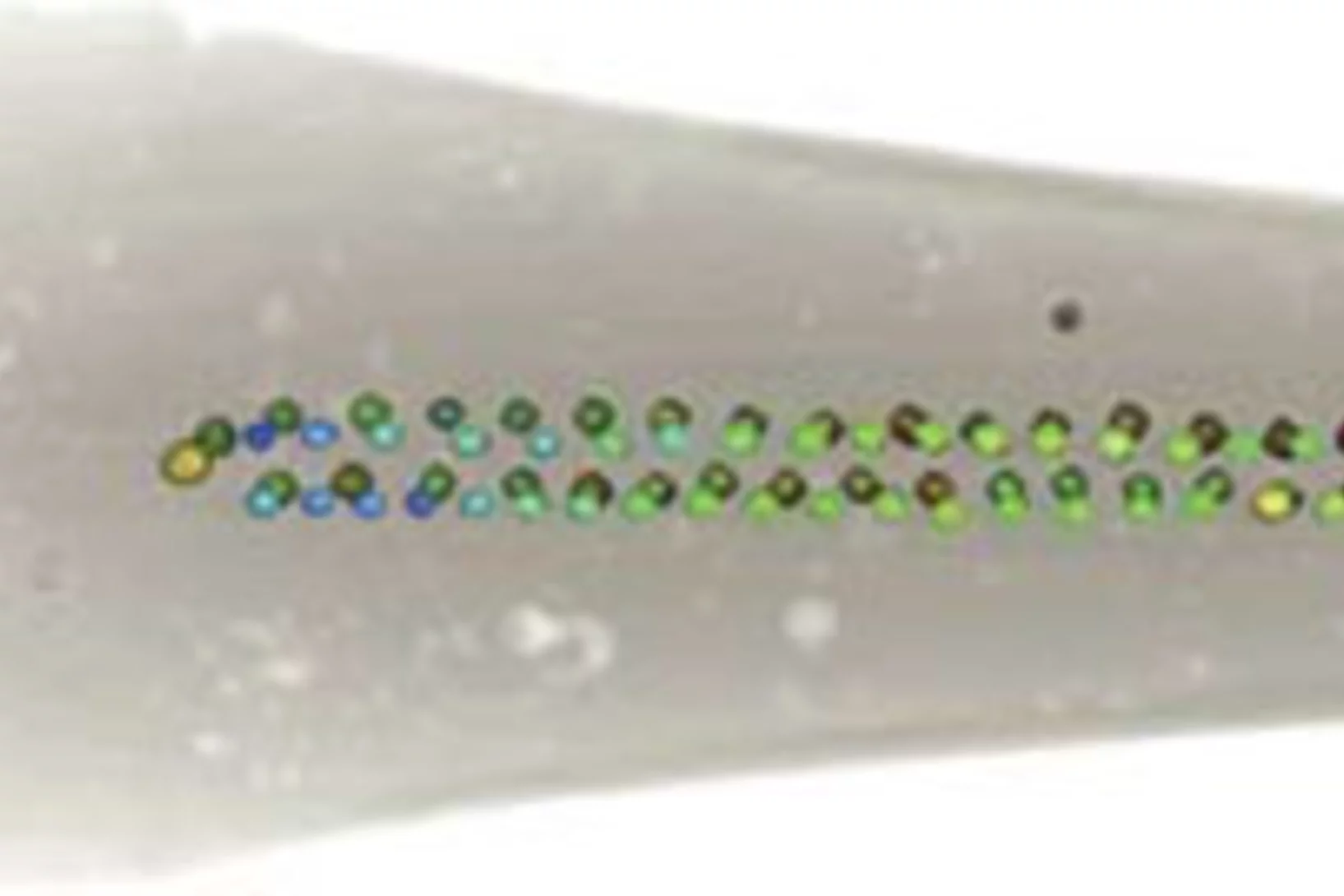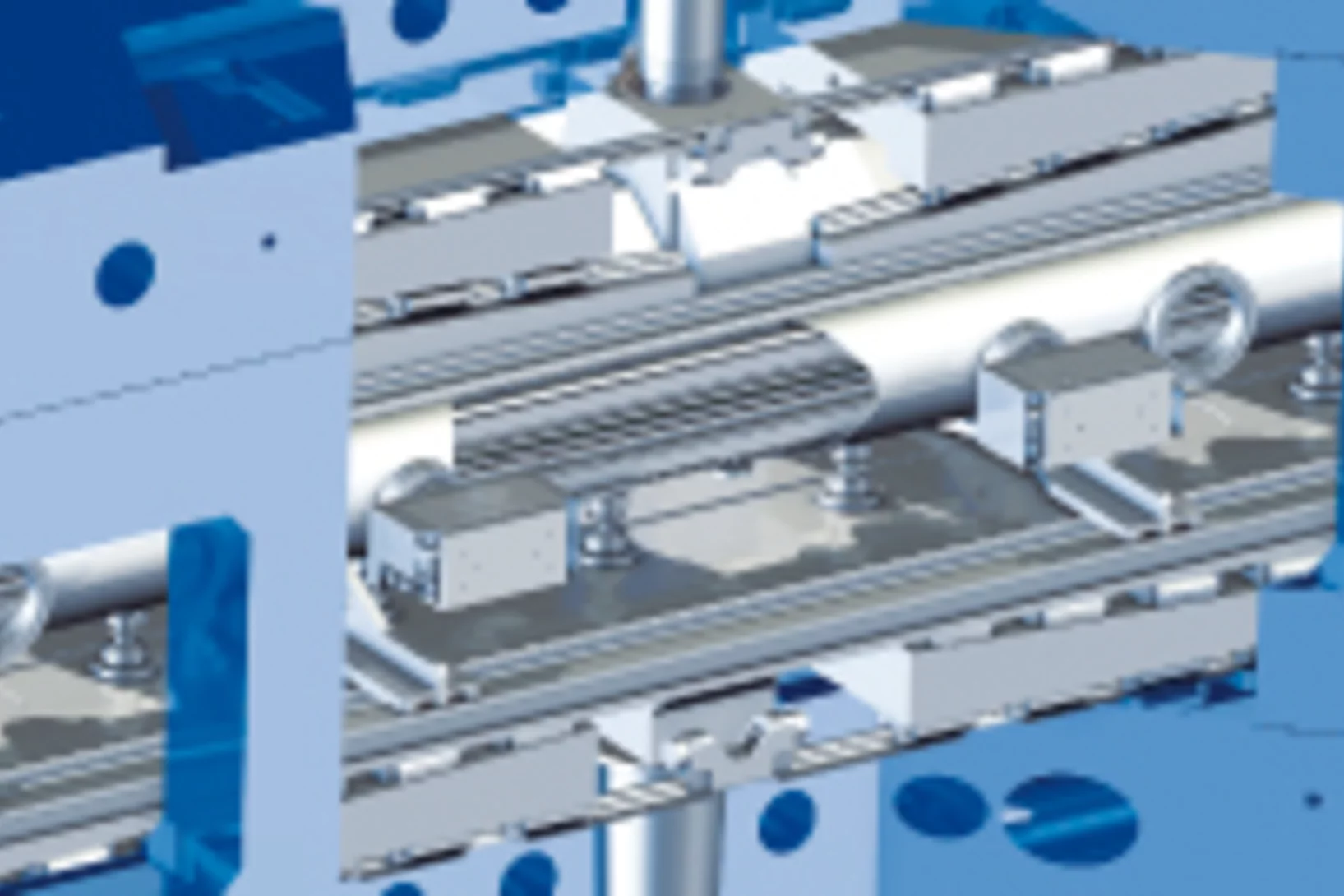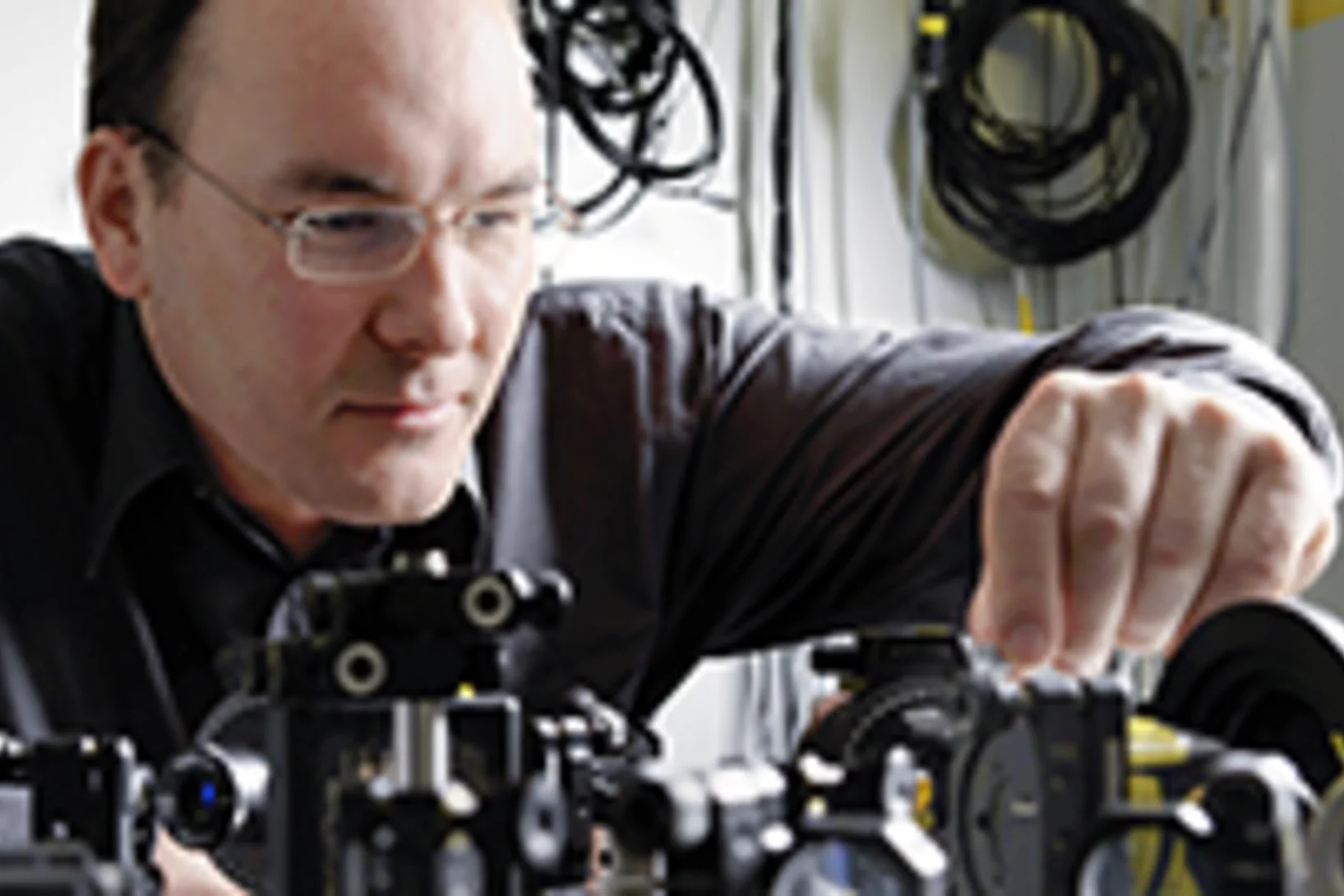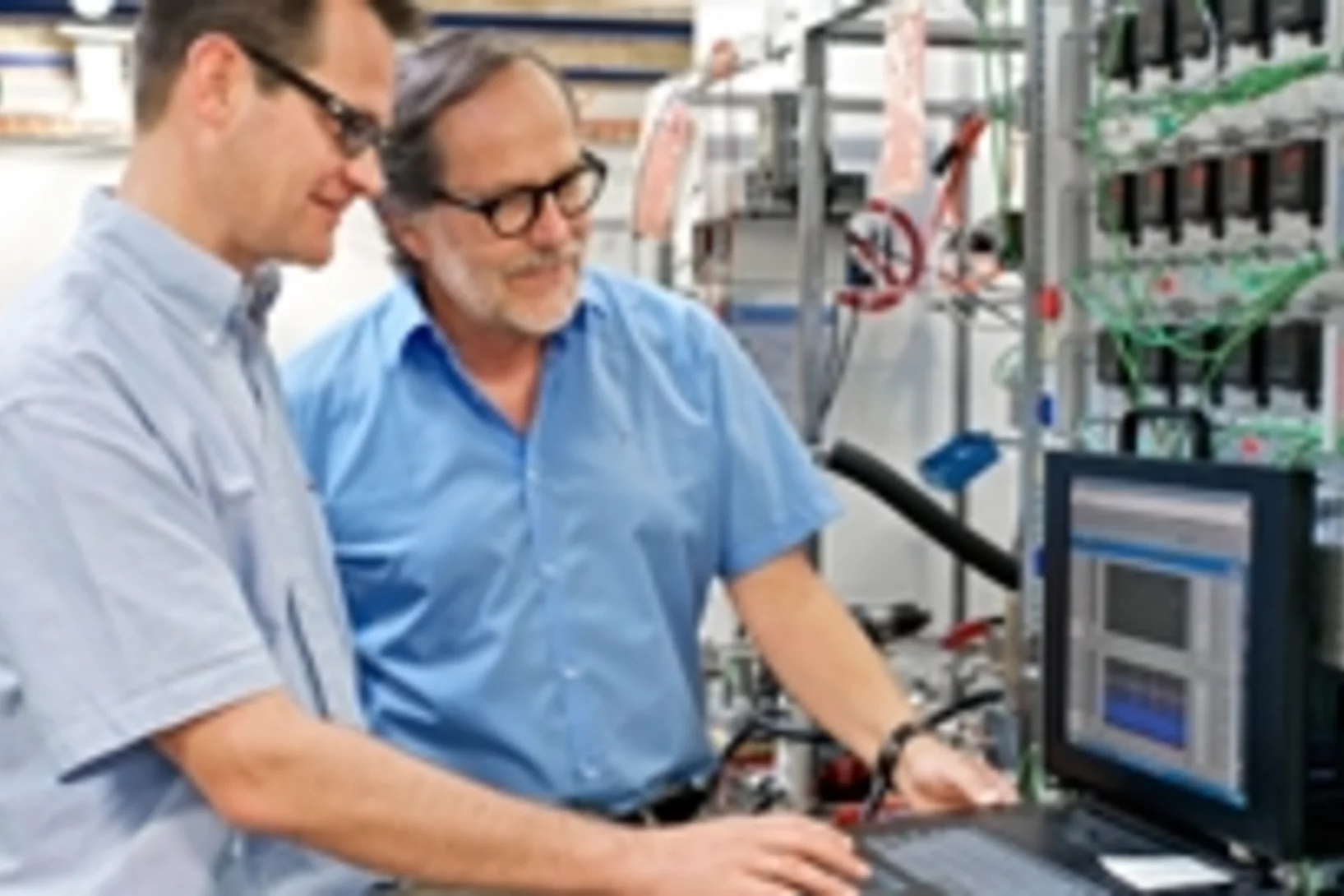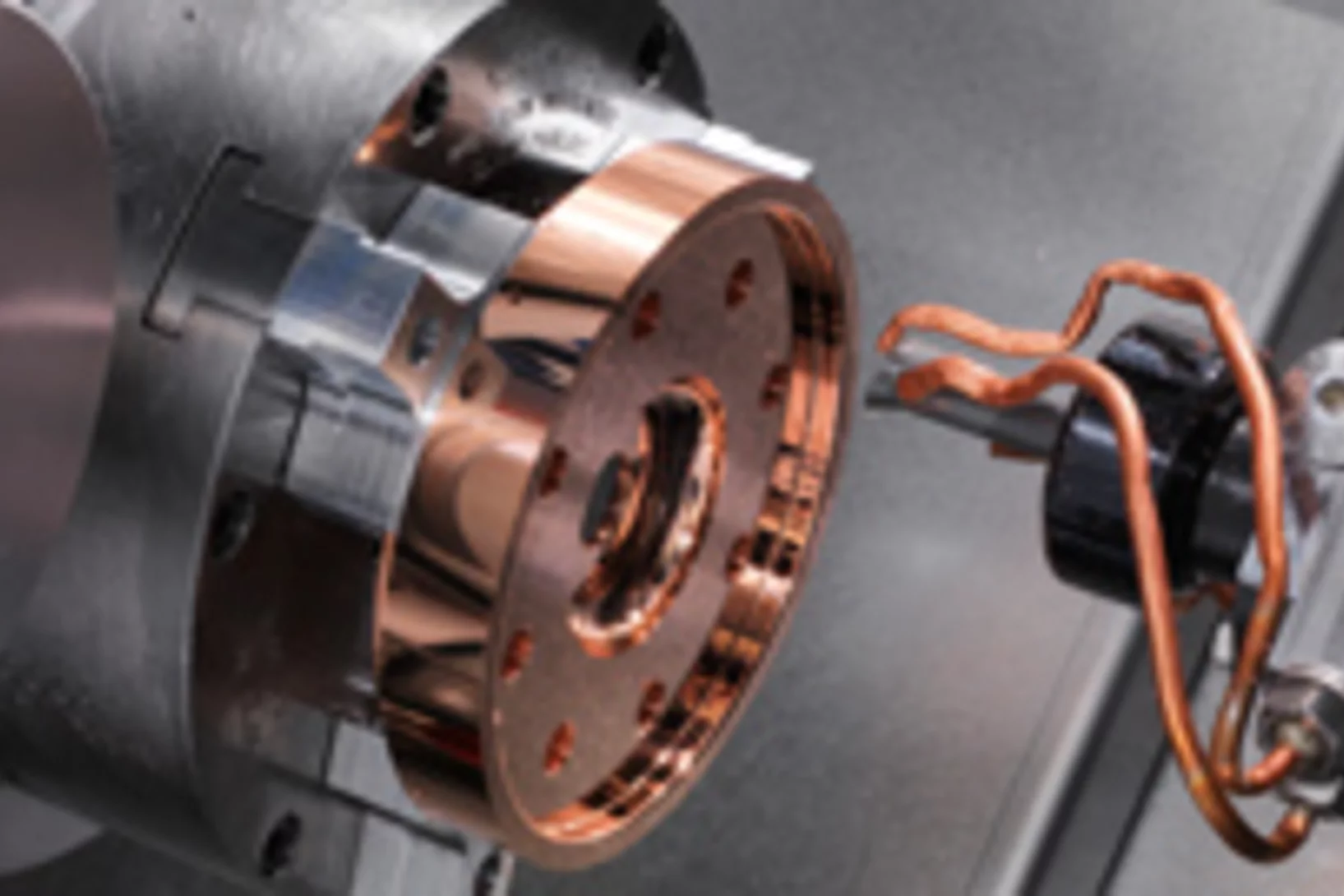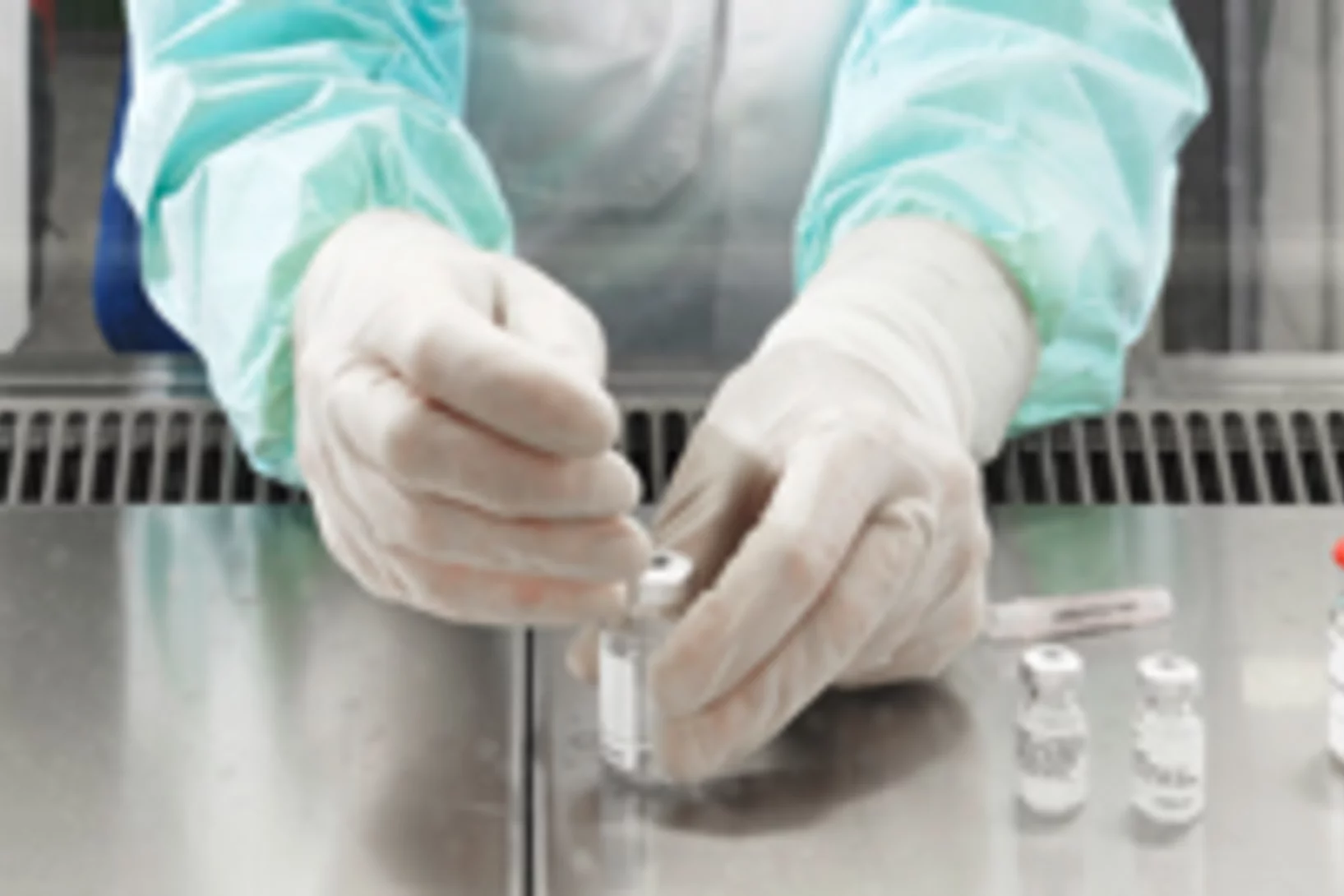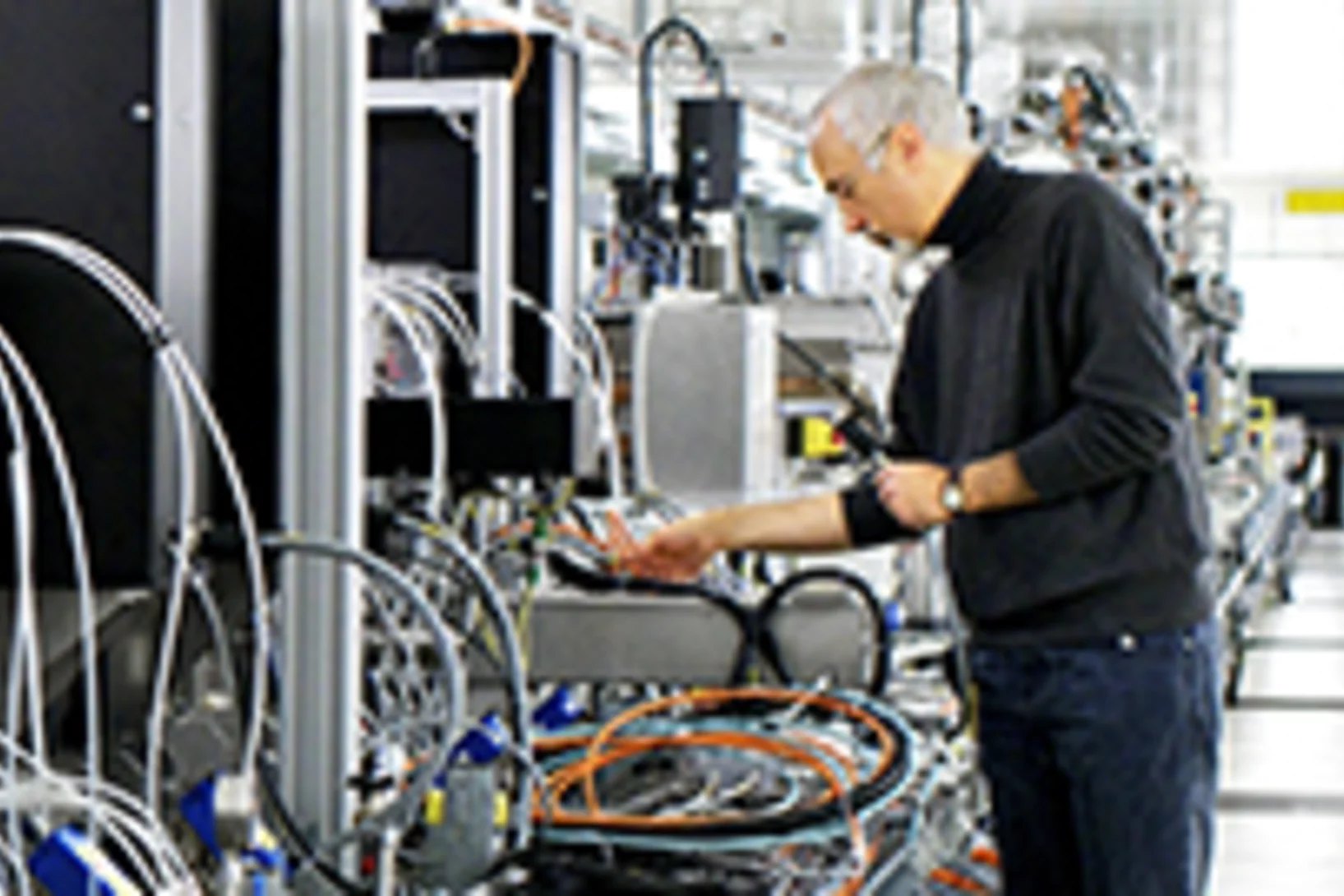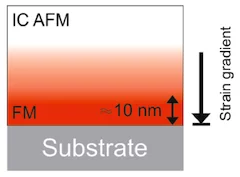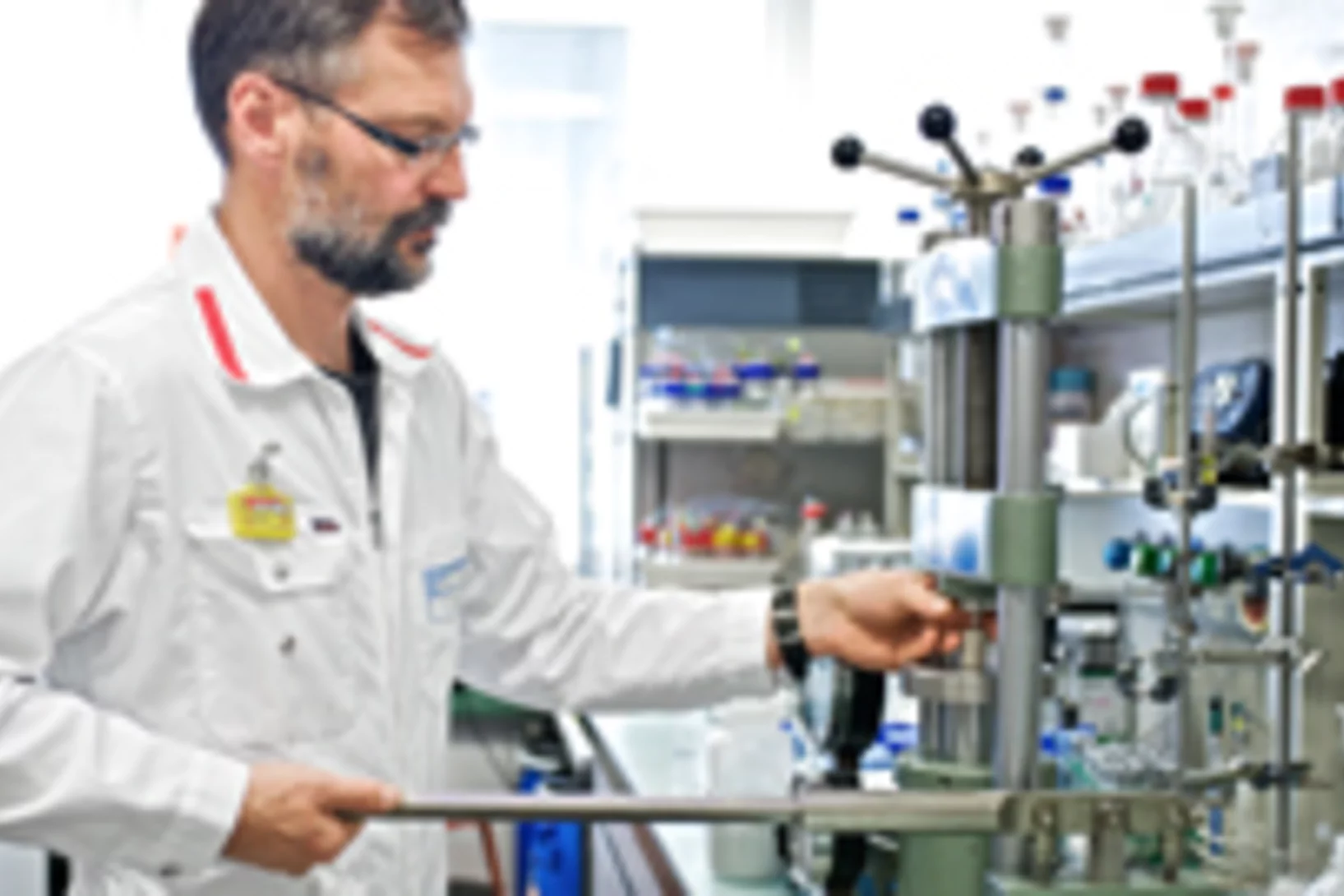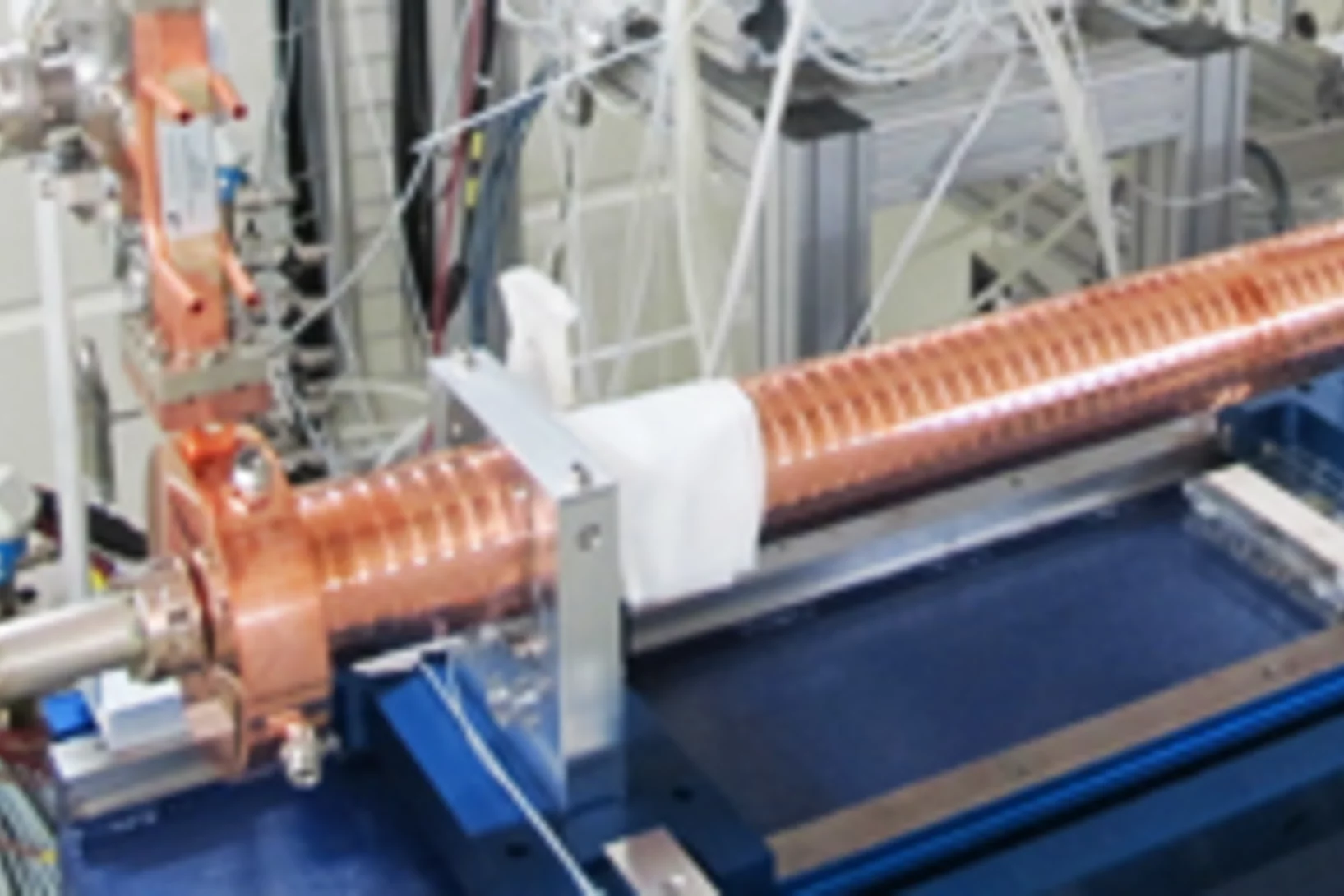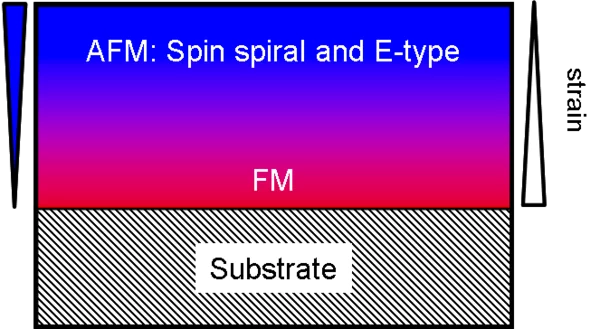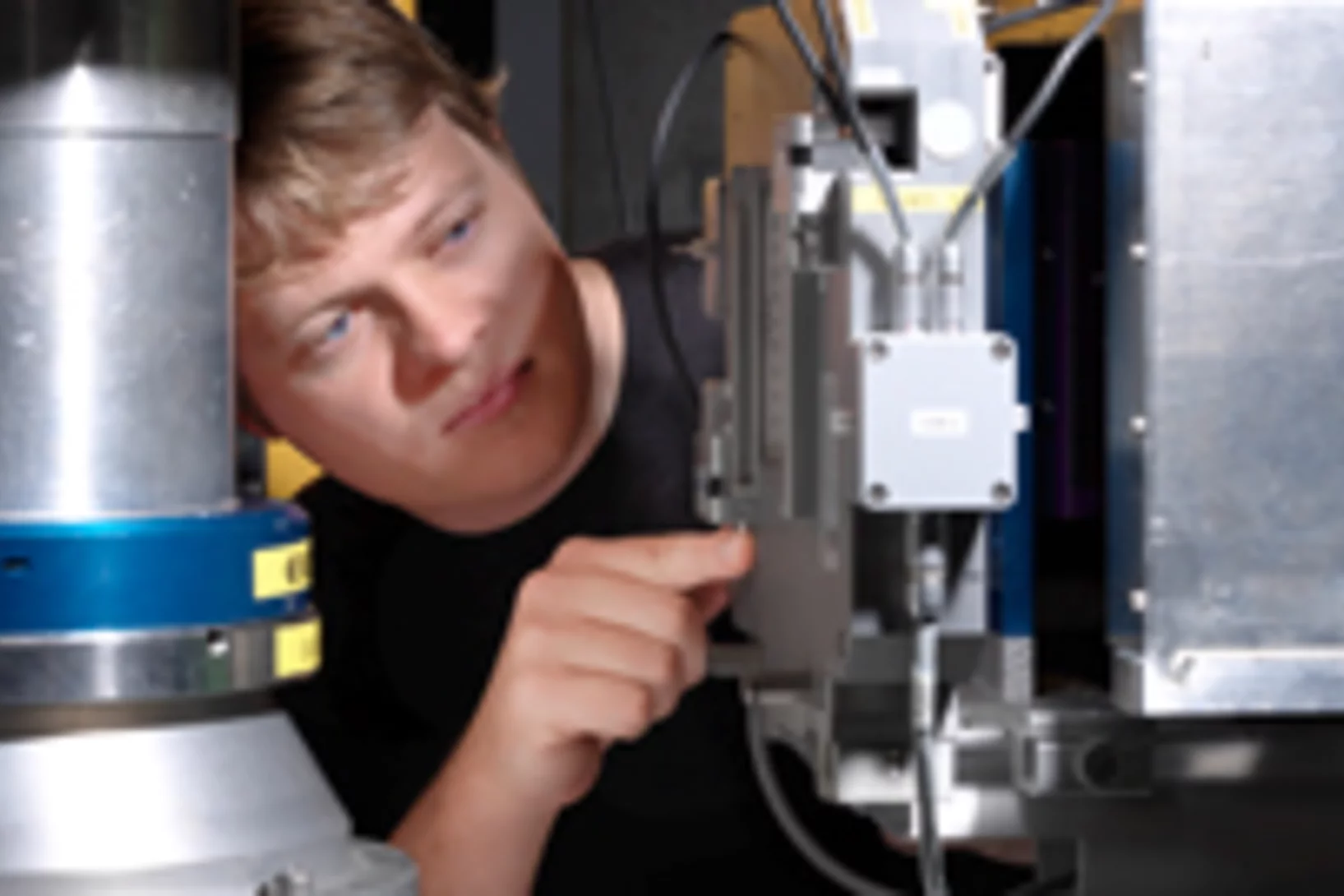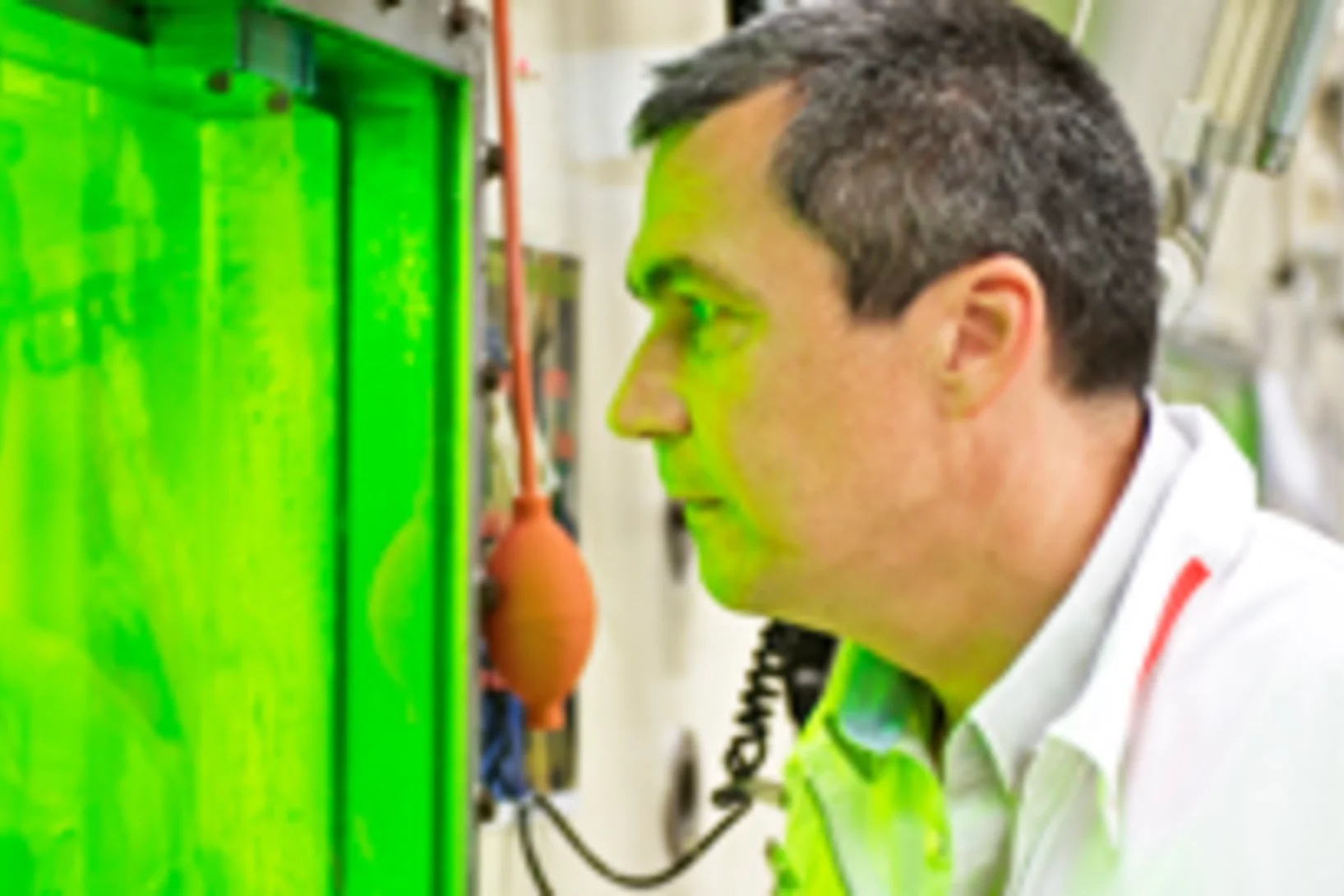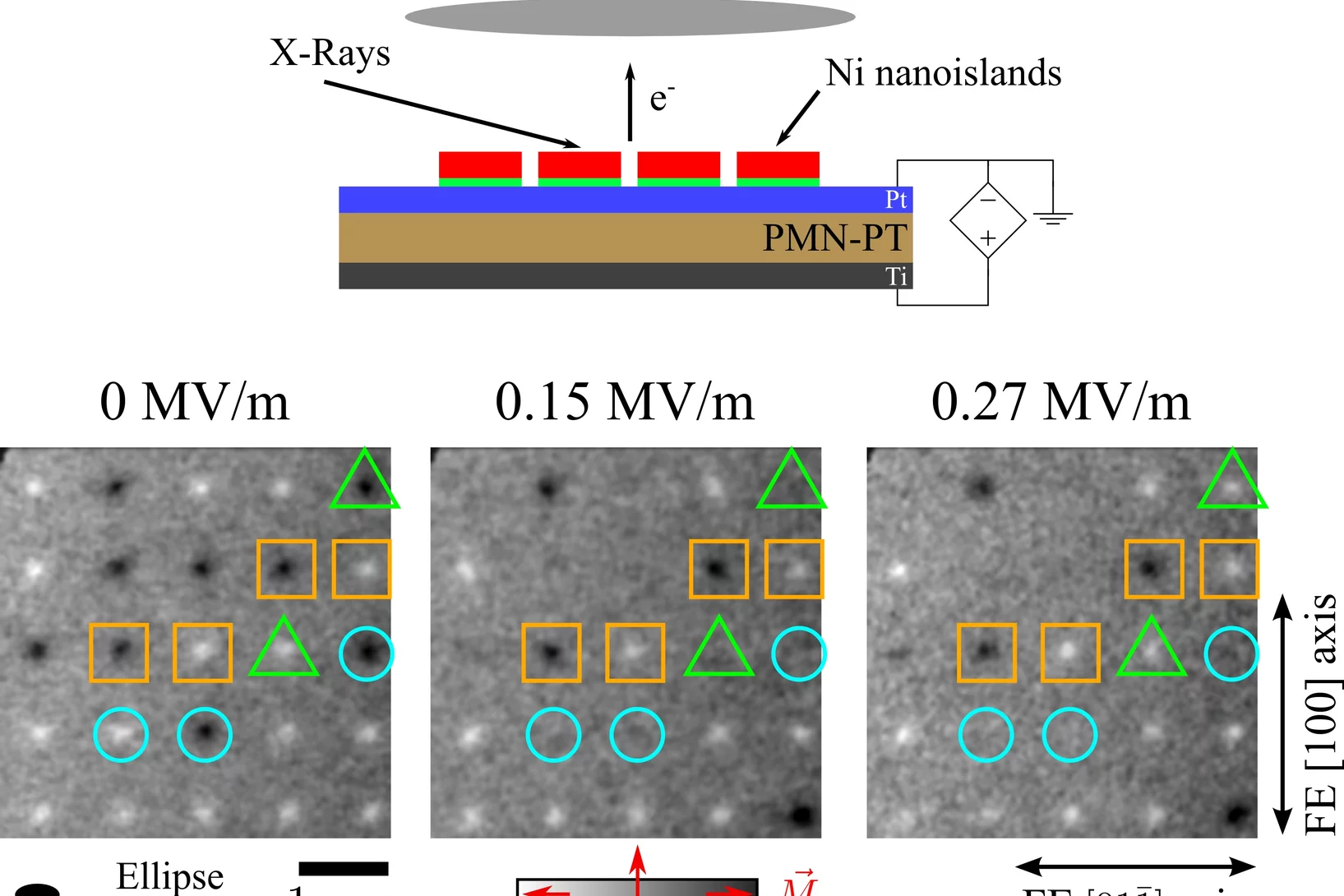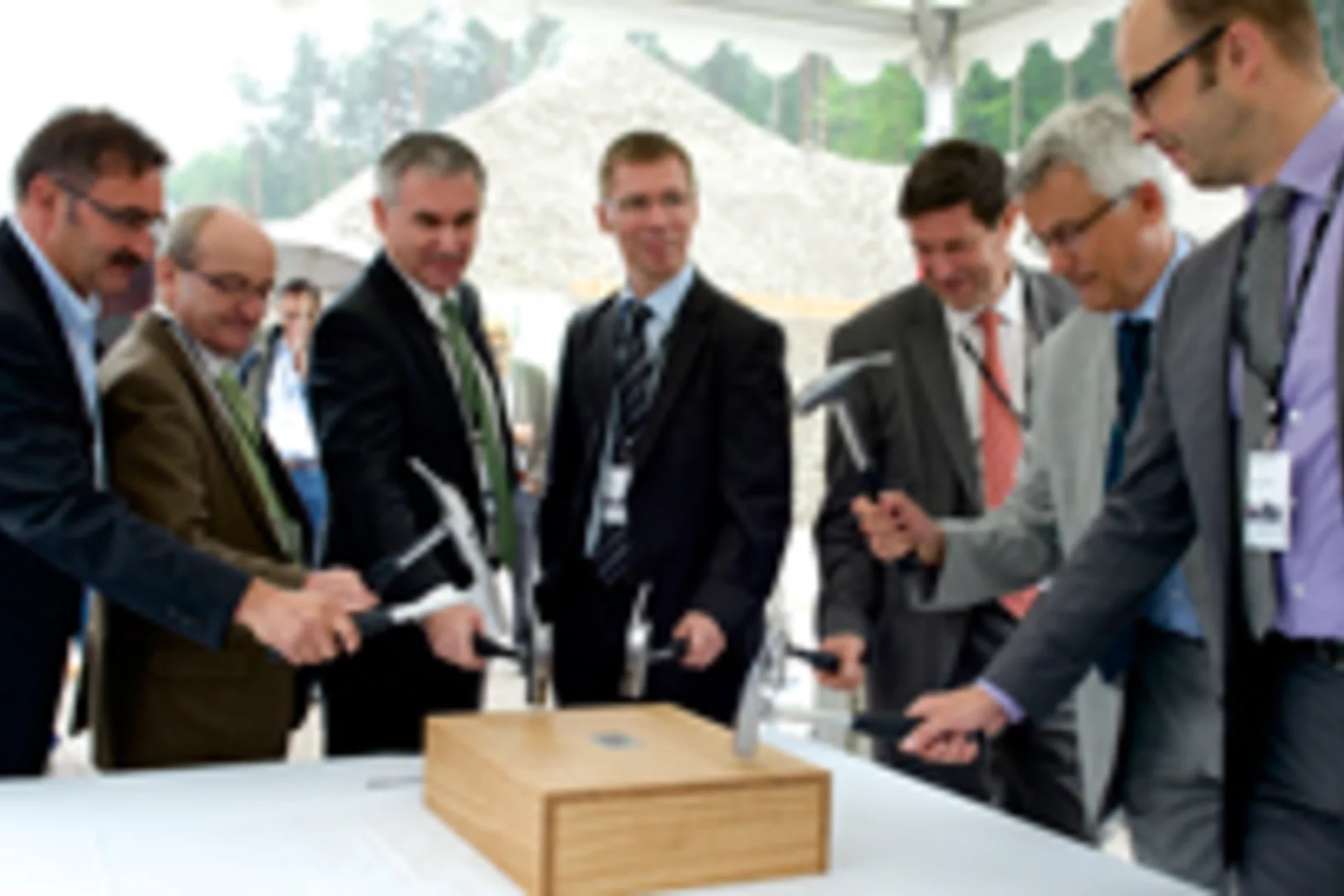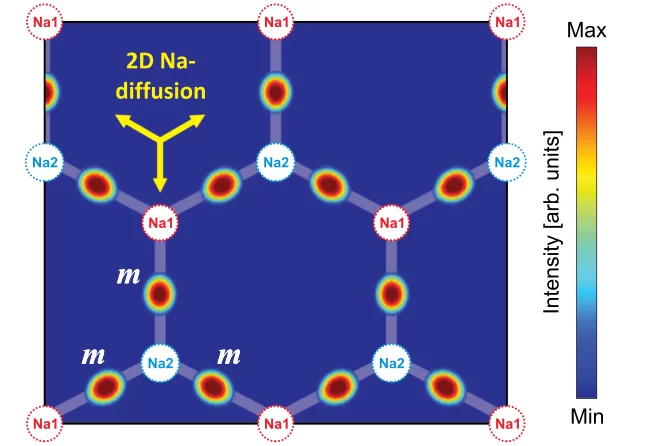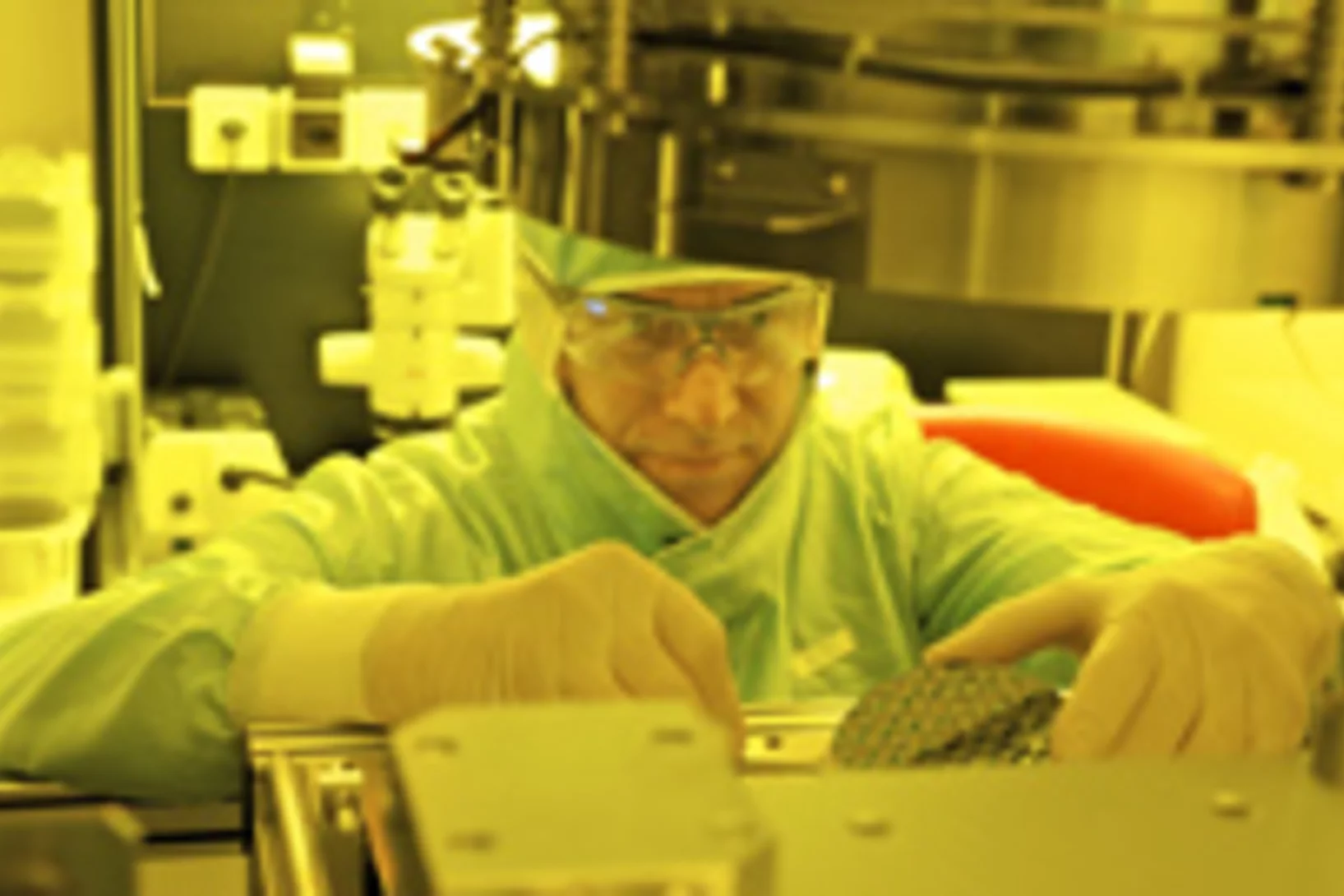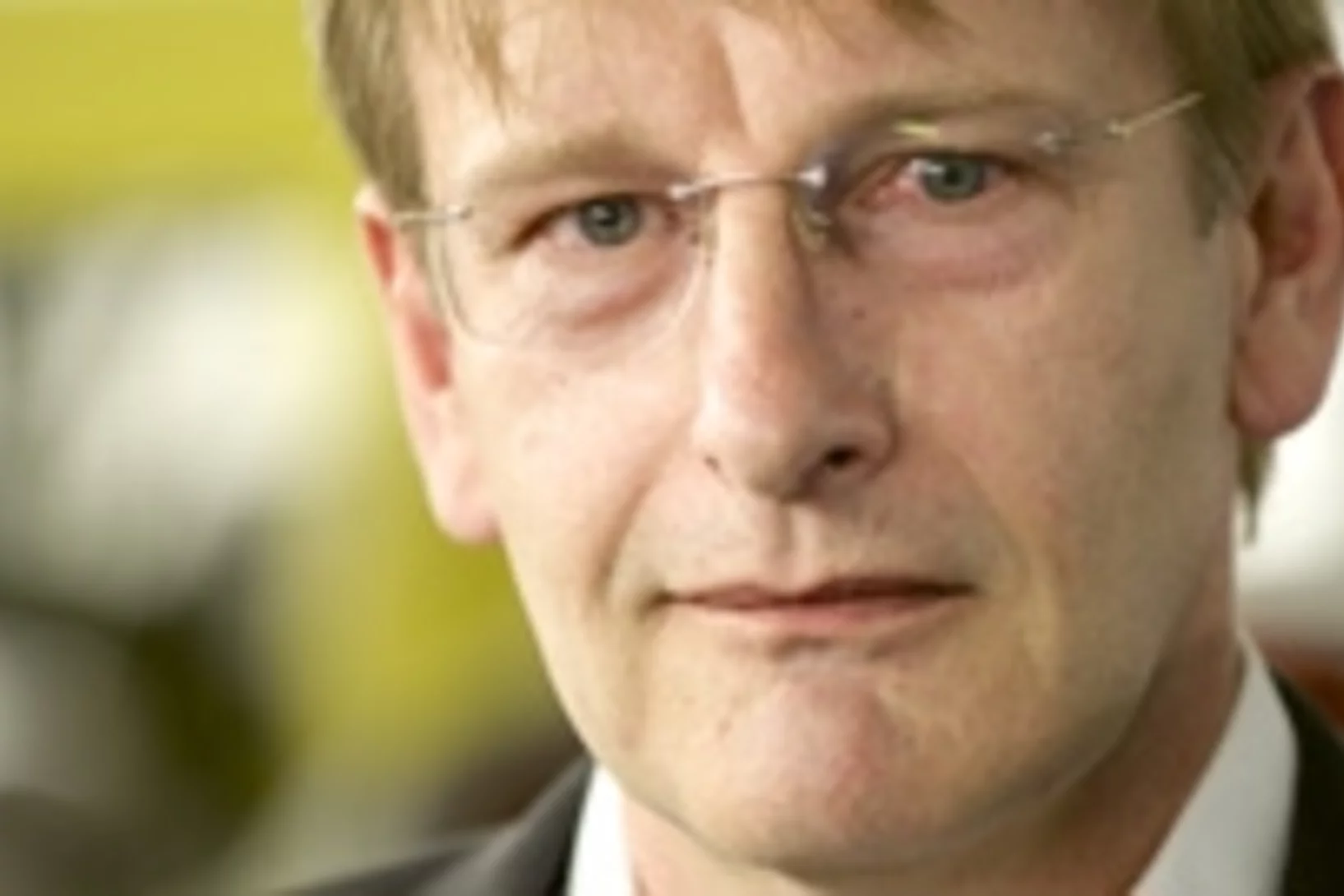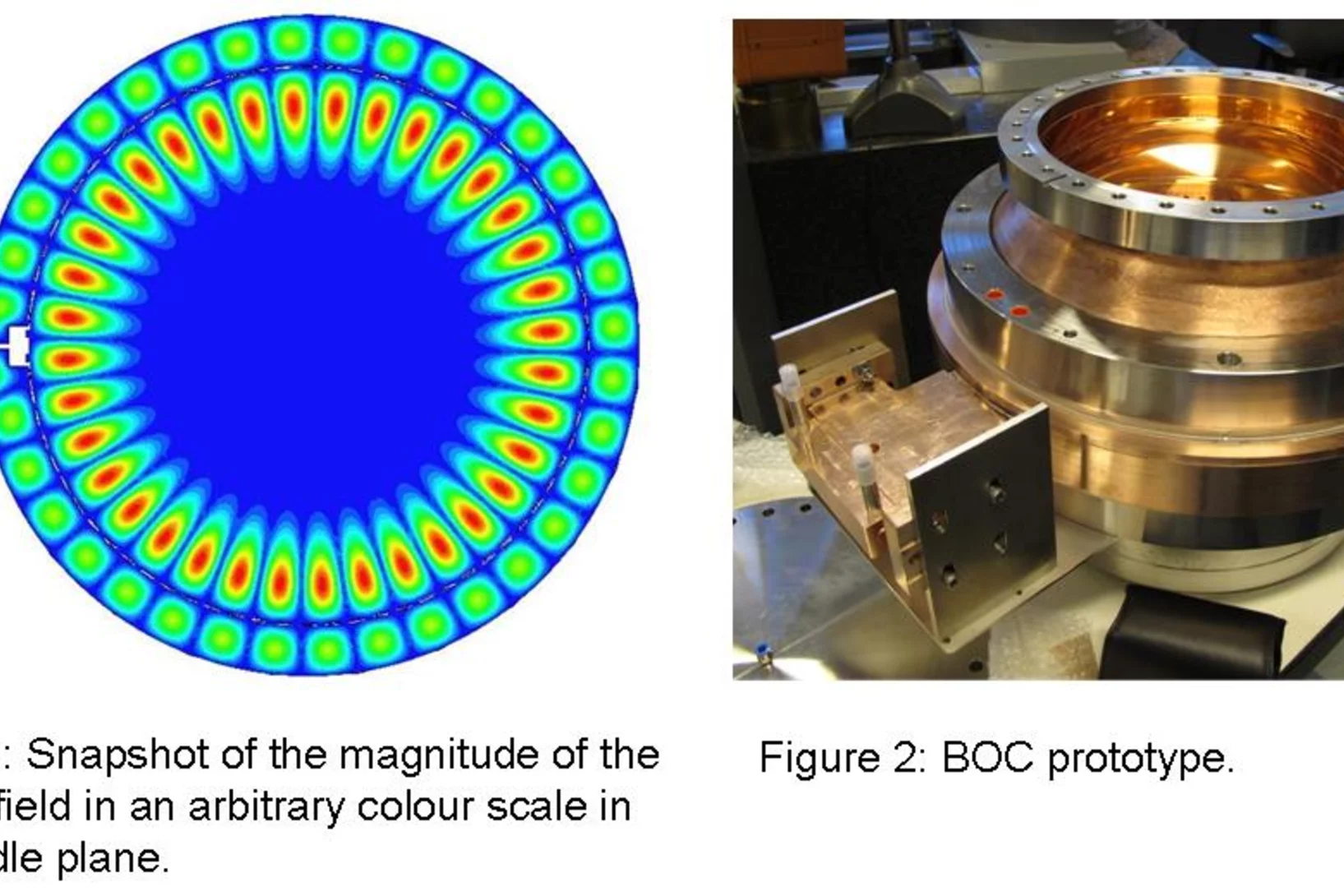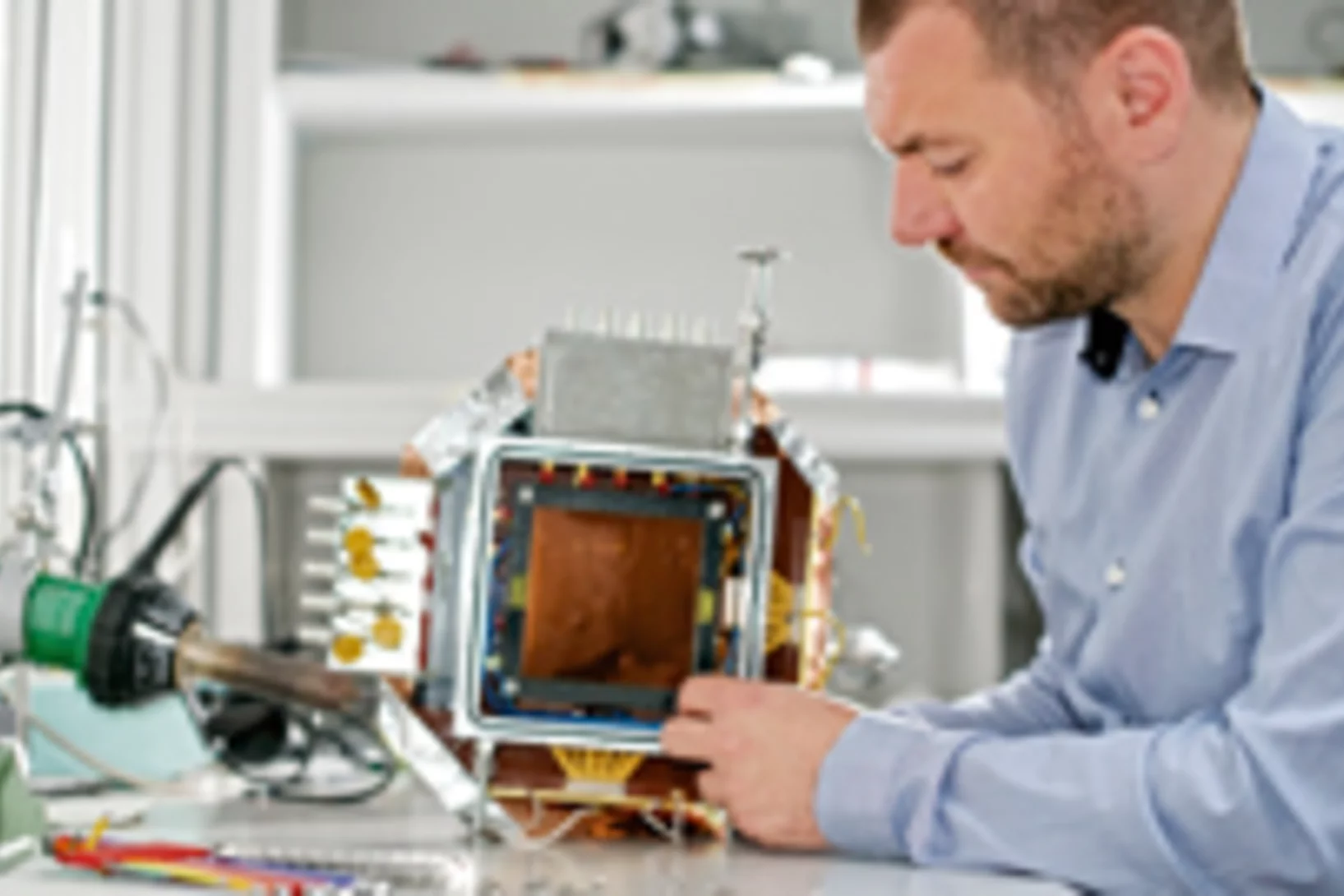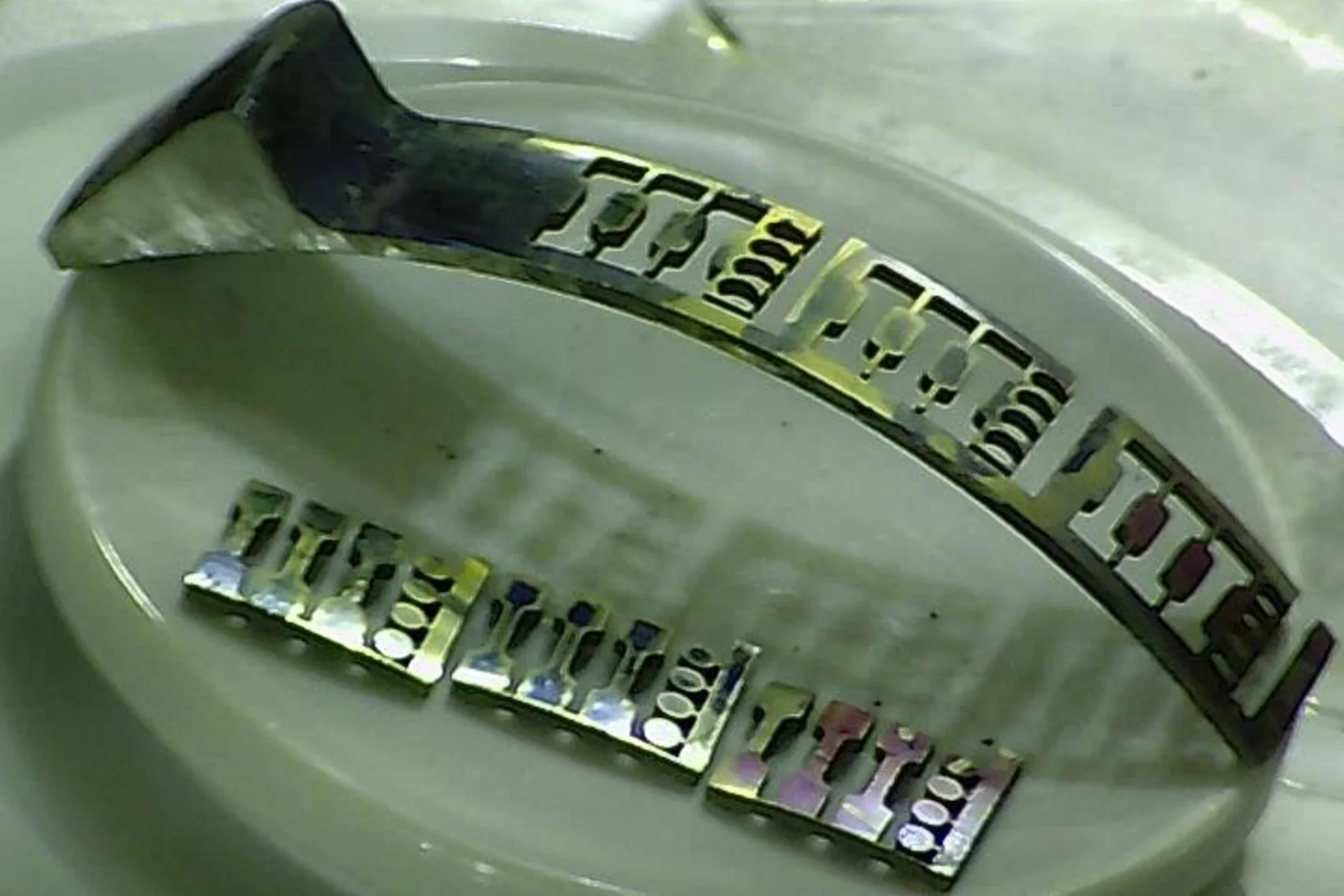Shifting away from nuclear energy, expanding solar and wind power, generating energy from biomass, reducing energy consumption. Switzerland is committed to becoming climate-neutral by 2050. An ambitious goal, which has become more urgent than ever due to the increasingly challenging geopolitical situation. How can a sustainable and resilient energy supply for Switzerland be established over the coming years? What's the optimal way to use renewable energy sources? What new technologies are especially promising? At PSI, researchers are seeking answers to these crucial questions.
Towards sodium ion batteries – understanding sodium dynamics on a microscopic level
Understanding sodium dynamics on a microscopic levelLithium ion batteries are highly efficient, But there are drawbacks to the use of lithium: it is expensive and its extraction rather harmful to the environment. One possible alternative might be to substitute lithium with sodium. To be able to develop sodium-based batteries, it is crucial to understand how sodium ions move in the relevant materials. Now, for the first time, scientists at the Paul Scherrer Institute PSI have determined the paths along which sodium ions move in a prospective battery material. With these results, one can now start to think of new and specific ways to manipulate the materials through slight changes to their structure or composition, for example à and thereby achieve the optimized material properties necessary for use in future batteries.
Computer simulations: a cornerstone of nuclear power station safety
Without computer simulations, the operation of nuclear power stations would be very difficult. Whether it is a question of installing new components or conducting safety tests, virtually everything has to be calculated and analysed on the computer first. At the Laboratory for Reactor Physics and Systems Behaviour of the Paul Scherrer Institute PSI, computational models and methodologies are developed with precisely this in mind. Through this, PSI researchers also act as an independent partner to the national regulatory authority ENSI and contribute thereby to support safe operation of the Swiss nuclear power plants.
Well-rounded concept for less nuclear waste
The idea of producing fuel for nuclear power stations in form of a package of spheres instead of today’s customary pellets was already born back in the 1960s. There was promise of a subsequent simplification of fuel production and a considerable reduction in the amount of radioactive waste both in the production of the fuel itself and after its use in a nuclear power station. However, the spherical fuel was never implemented as the fast reactors for which it was conceived were never built at a large scale. The Paul Scherrer Institute (PSI) has also been involved in the research on spherical fuel in the past. Now several projects partly funded by the EU are currently underway at the PSI again to refine the production of fuel spheres further. This form of fuel could either be used in special plants to reduce waste or in fast generation IV reactors, which in a closed cycle also produce less long-lived waste.
Neutrons and synchrotron light help unlock Bronze Age techniques
Experiments conducted at the PSI have made it possible to determine how a unique Bronze Age axe was made. This was thanks to the process of neutron imaging, which can be used to generate an accurate three-dimensional image of an object’s interior. For the last decade, the PSI has been collaborating with various museums and archaeological institutions both in Switzerland and abroad. The fact that the 18th International Congress on Ancient Bronzes, which is to be held at the University of Zurich from 3 à 7 September, will also be meeting at the PSI for one day is a testament to the success of the cooperation.
Reconstruction of the Fukushima nuclear accident
Researchers at the Paul Scherrer Institute (PSI) are currently involved in an international project aimed at reconstructing what happened to the reactor units during the nuclear accident at the Japanese nuclear power station, Fukushima Daiichi in March 2011. In particular, the estimate of the core end-state will help the owner of the damaged plant, the Tokyo Electricity Power Company (TEPCO) to plan the removal of components from the reactor containment and the final decontamination. Besides, the exercise is intended to contribute to further refinement of the computer programs used to perform nuclear accident simulations
Kanton und Paul Scherrer Institut stellen PARK innovAARE vor
Hightech-Zone in Villigen als idealer Netzwerkstandort für schweizerischen InnovationsparkDer Kanton Aargau und das Paul Scherrer Institut (PSI) stellen das Konzept PARK innovAARE für einen Netzwerkstandort des schweizerischen Innovationsparks vor. Die unmittelbare Nähe zum PSI mit seinen Grossforschungsanlagen macht das untere Aaretal zu einem idealen Standort, wo Spitzenforschung und unternehmerische Innovationstätigkeit sich beflügeln.This news release is only available in French and German.
The SwissFEL facility: the undulator section – where the light is produced
X-ray light is produced in SwissFEL when electrons accelerated in its linear accelerator are forced to follow a wavy path. This takes place within the undulators à regular arrangements of magnets that bend the electron beam. The whole undulator section will be 60 metres long.
Magnetisation controlled at picosecond intervals
A terahertz laser developed at the Paul Scherrer Institute makes it possible to control a material’s magnetisation precisely at a timescale of picoseconds. In their experiment, the researchers shone extremely short light pulses from the laser onto a magnetic material. The light pulse’s magnetic field was able to deflect the magnetic moments from their idle state in such a way that they exactly followed the change of the laser’s magnetic field with only a minor delay. The terahertz laser used in the experiment is one of the strongest of its kind in the world.
Five times less platinum: fuel cells could become economically more attractive thanks to novel aerogel catalyst.
Fuel cells that convert hydrogen into power and only produce pure water as a by-product have the potential to lead individual mobility into an environmentally friendly future. The Paul Scherrer Institute (PSI) has been researching and developing such low-temperature polymer electrolyte fuel cells for more than 10 years and initial field tests have already demonstrated the successful use of these fuel cells in cars and buses. However, further research is still required to improve the durability and economic viability of the technology. An international team of researchers involving the PSI has now manufactured and characterised a novel nanomaterial that could vastly increase the efficiency and shelf-life of these fuel cells à as well as reduce material costs.
The SwissFEL facility: the linear accelerator
In the linear accelerator, the electron beam receives the kinetic energy it needs in order to generate X-ray light. The linear accelerator is, in total, more than 300 metres long and at its heart there are 11,752 specially shaped copper discs in which the accelerating field is created.
Pancreas: new procedure detects tumours more efficiently
Better than CT and MRI: researchers at the Inselspital Berne, the University Hospital Basel and the Paul Scherrer Institute have devised a new method to detect small tumours in the pancreas.
The SwissFEL facility: the electron source
The electron beam for SwissFEL will be generated in an electron source. The demands of this component are very high: in order for the SwissFEL to be operated successfully, the electron beam must be of the highest quality from the very beginning.
Strain-Induced Ferromagnetism in Antiferromagnetic LuMnO3 Thin Films
Interfaces of transition metal oxides are a fertile ground for new physics, often showing novel electronic and magnetic properties that do not exist in the bulk form of the material. A relatively little-explored direction in this field concerns the interfacial properties of multifunctional materials such as the magnetoelectric multiferroics.
How radionuclides escape through rock: insights for a geological waste storage site
How do radioactive substances move through the host rock in a deep repository for nuclear waste? Researchers from the Diffusion Processes Group in the Laboratory of Waste Management at the Paul Scherrer Institute (PSI) have been investigating. The transport properties of negatively charged radionuclides, which are repelled by the negatively charged surfaces of clay minerals and thus hardly adhere to the rock, are well known. An EU project in which the PSI is also involved is now yielding similar insights into positively charged and therefore highly adherent radionuclides.
First SwissFEL accelerator structure completed
At the PSI, the first accelerator structure has been completed for the linear accelerator of SwissFEL. A total of 104 of these structures are needed to accelerate the electrons to the required energy to produce the X-ray pulses in SwissFEL. The component manufactured using high-precision technology is currently undergoing high-performance testing.
Strain-Induced Ferromagnetism in Antiferromagnetic LuMnO3 Thin Films
Single phase and strained LuMnO3 thin films are discovered to display coexisting ferromagnetic and antiferromagnetic orders. A large moment ferromagnetism (≈1μB), which is absent in bulk samples, is shown to display a magnetic moment distribution that is peaked at the highly strained substrate-film interface. We further show that the strain-induced ferromagnetism and the antiferromagnetic order are coupled via an exchange field, therefore demonstrating strained rare-earth manganite thin films as promising candidate systems for new multifunctional devices.
Ferromagnetic and antiferromagnetic – at the same time
Researchers from the Paul Scherrer Institute (PSI) have made thin, crystalline layers of the material LuMnO3 that are both ferromagnetic and antiferromagnetic at the same time. The LuMnO3 layer is ferromagnetic close to the interface with the carrier crystal. As the distance increases, however, it assumes the material’s normal antiferromagnetic order while the ferromagnetism steadily becomes weaker. The possibility of producing two different magnetic orders within a material could be of major technical importance.
Knowledge for tomorrow from "hot cells"
The manipulation and examination of irradiated and therefore radioactive objects, be they from nuclear power stations or research facilities, requires strict safety measures. Tests may only be conducted in so-called hot cells, where the radioactivity is hermetically enclosed and shielded behind concrete and lead walls up to 1 metre thick. In the hot cells of the PSI hot lab, the burnt-off fuel rods from the Swiss nuclear power stations are studied from a materials science perspective. The insights gained help nuclear power station operators to optimise the efficiency and safety of their plants. Besides this service, the hot lab is involved in several international research projects.
Single Domain Spin Manipulation by Electric Fields in Strain Coupled Artificial Multiferroic Nanostructures
Encoding information by the application of an electric field has a key role in the development of novel memory devices that can operate at high speed while keeping low energy consumption. In magnetoelectric multiferroics, magnetic and ferroelectric ordering coexist and are coupled together so that it is possible to manipulate the material's magnetic structure by applying an electric field with a negligible current flow.
Weltmeister aus dem PSI
Silvan Melchior, Elektronik-Lernender vom PSI, hat bei der Weltmeisterschaft der Berufslernenden in Leipzig die Goldmedaille in seinem Fachgebiet gewonnen. Insgesamt sind in dem Fach 16 Lernende aus 16 Ländern angetreten. Insgesamt hat das Schweizer Team mit neun Gold-, drei Silber-, fünf Bronzemedaillen sowie 18 Diplomen den zweiten Gesamtplatz hinter Korea belegt.This news release is only available in German.
Laying of the corner stone for the new large research facility SwissFEL
At the ceremony on 3 July 2013, not only did the PSI lay the corner stone for the new large research facility SwissFEL, but it also paved the way for the continuation of twenty-five years of successful research at the institute.
1D to 2D Na+ Ion Diffusion Inherently Linked to Structural Transitions in Na0.7CoO2
We report the observation of a stepwise "melting" of the low-temperature Na-vacancy order in the layered transition-metal oxide Na0.7CoO2. High-resolution neutron powder diffraction analysis indicates the existence of two first-order structural transitions, one at T1 ≈ 290 K followed by a second at T2 ≈ 400 K. Detailed analysis strongly suggests that both transitions are linked to changes in the Na mobility.
The cleanest place at the Paul Scherrer Institute
Highly sensitive processes take place in the cleanrooms of the Paul Scherrer Institute (PSI) as a single dust particle in the wrong place could have disastrous consequences. Here is a glimpse behind the scenes in rooms that are so clean even pencils are prohibited.
Not a drop too much
The supply of a vapour saturated gas mixture plays a crucial role in many industrial processes. In this way, for example, the emission of nitrogen oxides during diesel combustion can be reduced by ensuring high vapour saturation of the gas mixture. A scientist at the Paul Scherrer Institute has come up with an invention which enables this to be implemented industrially in the future via a simple, flexible and robust technique.
Searching for the Higgs boson: PSI inside
Higgs Particle Found announced the media triumphantly in July 2012. But for Roland Horisberger, particle physicist at PSI, this was a premature conclusion: It will take at least another five years before we can be sure of that. Whatever the findings à whether this is the original Higgs boson, or only one of the theoretical Higgs-like particles à one can surely put a tag on them that reads PSI inside.
Dosing Differential Electrochemical Mass Spectrometry (D-DEMS) for Li-O2 Batteries
The high-energy rechargeable Li-O2 battery has been subject to intensive research worldwide during the past years. The Li-O2 cell mainly comprises a negative (e.g. Li metal) and positive (e.g. porous carbon) electrode separated by an electronically insulating, but Li+ conducting electrolyte layer. In order to study the cell chemistry, a differential electrochemical mass spectrometry setup based on a set of valves, a pressure sensor and a quadrupole mass spectrometer has been developed.
RF Pulse compressor for the SwissFEL
The SwissFEL C-band (5.712 GHz) linac consists of 26 RF modules. Each module is composed of a single 50 MW klystron feeding a pulse compressor and four two meter long accelerating structures. The pulse compressor is a passive device that compresses in time the 3 μs pulse from klystron into a 330 ns pulse. The compressed power is then guided to the four accelerating structures. The pulse compressor is based on a single Barrel Open Cavity (BOC). The BOC makes use of a “whispering gallery” mode which has an intrinsically high quality factor and operates in resonant rotating wave regime (Figure 1); moreover, and contrary to the conventional SLED scheme, a single cavity is sufficient to define the pulse compressor, without the need for two cavities. A prototype has been manufactured by the Dutch company VDL (Figure 2) and successfully power tested in PSI reaching a peak power of 300 MW.
Fast neutrons for improved safety
Neutrons are an excellent tool for the non-destructive imaging the interior of objects. They can provide a valuable complement to the more widely used x ray radiography. For some materials that are virtually opaque or for those that cannot be distinguished by X-rays, neutrons provide the only informative dissection tool. However, neutron radiography is mainly confined to the laboratory and fixed facilities, because neutron generation relies on equipment like nuclear reactors or particle accelerators, which are costly, complex and cannot be moved. Scientists at the Laboratory for Thermohydraulics at the Paul Scherrer Institute PSI want to develop a more flexible imaging technique based on fast neutrons.
ecoinvent – The World’s Leading LCA Database Launches Version 3.0
The life cycle inventory database ecoinvent forms the basis for life cycle assessment projects, eco-design, and product environmental information. Since 2003, ecoinvent has enabled companies to manufacture their products more in harmony with the environment, policymakers to implement new policies, and consumers to adopt more environmentally friendly behaviour. The new version 3.0 is a further milestone in life cycle assessment: new and updated data offer ecoinvent users a greater number of possible applications in the areas of e.g. chemical production, foodstuffs, vegetables and electricity.
MEGAPIE samples delivered to partners for post irradiation investigation
The MEGAWatt Pilot Experiment was operated for neutron generation with the PSI high intensity proton beam in 2006. The experiment utilized liquid target material, a lead bismuth eutectic. This marked a major milestone towards Accelerator Driven Systems (ADS), which are intended to be used for the incineration of nuclear waste.

